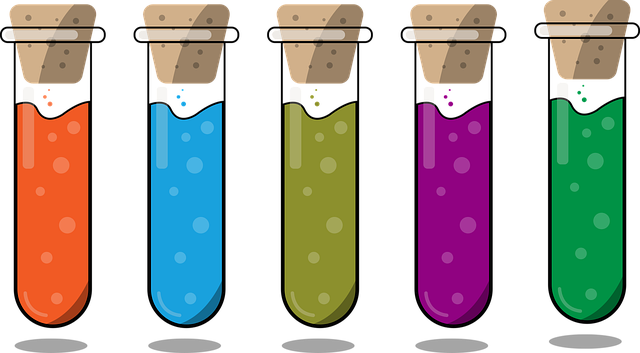Translation services for Diagnostic Test Results UK are indispensable in accurately conveying medical information to patients and healthcare providers who speak different languages. These services must guarantee high levels of accuracy, cultural sensitivity, and contextual relevance to prevent miscommunications that could compromise patient safety and effective treatment. Specialists with expertise in both the source and target languages and a deep understanding of medical terminology are required to navigate the complexities of medical language and ensure that nuanced meanings are preserved across different linguistic and cultural backgrounds. The integrity and meaning of diagnostic data must be upheld through meticulous translation processes, which include the use of translation memory software for consistency, peer-review among translators for verification, and collaboration with healthcare providers to provide necessary context. This comprehensive approach has significantly improved patient care and treatment outcomes within the UK's multicultural regions by ensuring clear and accurate communication, leading to informed decision-making and better health outcomes. The integration of professional translation services for diagnostic results is now a standard protocol in the UK, reflecting a commitment to equitable healthcare and enhancing patient satisfaction and trust.
Accuracy in medical diagnostics is paramount, especially when transcending language barriers. This article sheds light on the critical role of translation services in ensuring that diagnostic test results are conveyed with precision and clarity, particularly within the UK’s diverse cultural landscape. We delve into the inherent challenges translators face, navigating cultural nuances and linguistic complexities to provide clear interpretations. By examining best practices for translating diagnostic reports, we underscore the importance of these services in achieving accurate communication and enhancing patient care outcomes. Join us as we explore a case study highlighting the significant impact of effective translation services on healthcare in the UK.
- Understanding the Critical Role of Accurate Translation Services in Medical Diagnostics
- The Challenges of Translating Diagnostic Test Results: Cultural Nuances and Linguistic Precision
- Best Practices for Ensuring Clarity and Precision in Translated Diagnostic Reports
- Case Study: How Effective Translation Services Contributed to Improved Patient Outcomes in the UK
Understanding the Critical Role of Accurate Translation Services in Medical Diagnostics

In the realm of medical diagnostics, the precision of translation services plays a pivotal role in ensuring patient safety and the integrity of healthcare outcomes. When diagnostic test results are generated in the UK, they often contain complex terminology and nuanced information that must be accurately conveyed to patients and practitioners who speak different languages. The importance of translation services for Diagnostic Test Results UK cannot be overstated; these services act as a vital bridge, facilitating clear and precise communication across linguistic barriers. Mistranslations can lead to misdiagnosis or incorrect treatment plans, which in turn could compromise patient care. Therefore, it is imperative that translation services for Diagnostic Test Results UK are not only accurate but also culturally sensitive and contextually appropriate, capturing the subtleties of medical language while ensuring that the nuances of each patient’s unique situation are understood and respected by all parties involved in their care. This level of accuracy and cultural competence is essential to uphold the trust between healthcare providers and patients from diverse linguistic backgrounds, thereby enhancing the overall quality of healthcare delivery within the UK.
The Challenges of Translating Diagnostic Test Results: Cultural Nuances and Linguistic Precision

When it comes to translating diagnostic test results, precision and cultural sensitivity are paramount. The nuances inherent in medical language present significant challenges for translation services, particularly when cross-referencing diagnostic test results UK with patients’ native languages or dialects. Medical terminology often carries a specific weight and implication that may not have direct equivalents across linguistic barriers. This necessitates a deep understanding of both the source and target languages, as well as the medical context within which these terms are used.
Linguistic precision is critical because a mistranslation can lead to misinterpretation of test results, potentially affecting patient management and treatment outcomes. The implications of such errors can be far-reaching, impacting not only patient care but also the integrity of clinical research when data is shared internationally. Translation services for Diagnostic Test Results UK must be adept at navigating these complexities to provide accurate translations that are understandable within the cultural context of the recipient. This requires a combination of expert medical knowledge, proficiency in the relevant languages, and an awareness of cultural differences that may influence the interpretation of medical information. It is through this concerted effort that translation services can ensure the integrity and meaning of diagnostic test results are preserved across different linguistic and cultural settings.
Best Practices for Ensuring Clarity and Precision in Translated Diagnostic Reports

When translating diagnostic test results, the precision and clarity of communication are paramount to ensure patient safety and informed decision-making. Translation services for diagnostic test results in the UK must adhere to stringent standards to maintain accuracy and reliability. To achieve this, translators should be specialized medical experts proficient in both the source and target languages. Utilizing translation memory software can streamline the process by maintaining consistency across translated documents, which is crucial when dealing with medical terminology that may repeat throughout a patient’s records. Additionally, collaboration between healthcare providers and professional translation services is essential for context clarification, ensuring terms like ‘normal’, ‘elevated’, or ‘abnormal’ are accurately conveyed across languages. Implementing a robust peer-review system within translation services can further enhance the accuracy of translated reports by having another expert verify translations for medical terminology and cultural nuances that may affect interpretation. This meticulous approach in translation services for diagnostic test results UK is critical to support healthcare professionals in delivering high-quality patient care. By prioritizing these best practices, translation services can provide diagnostic test results that are not only linguistically correct but also medically meaningful, thus supporting informed healthcare decisions regardless of language barriers.
Case Study: How Effective Translation Services Contributed to Improved Patient Outcomes in the UK

In the UK’s healthcare system, the accuracy of diagnostic test results is paramount to patient care and treatment outcomes. A case study that highlights the importance of effective translation services for diagnostic test results in the UK illustrates how such services significantly contributed to improved patient outcomes. When a patient who speaks limited English required urgent medical attention, the healthcare providers faced a critical challenge: ensuring the patient understood their test results fully. The solution lay in the utilization of specialized translation services that not only translated the results into the patient’s native language but also conveyed the complex medical terminology accurately. This initiative bridged the communication gap and allowed for informed decision-making by the patient, leading to a successful treatment plan and better health outcomes. The use of professional translation services for diagnostic test results in the UK has since become a standard practice in multicultural areas, demonstrating a commendable commitment to patient care and equity in healthcare. As a result, healthcare providers in the UK have reported fewer miscommunications, reduced readmission rates, and a higher level of patient satisfaction. This case underscores the significance of linguistic precision in medical communications and the role of translation services as an integral component of patient-centered healthcare.
In conclusion, the translation of diagnostic test results is a critical aspect of patient care, particularly in diverse linguistic environments like the UK. The discussion has highlighted the indispensable role of precise and accurate translation services for diagnostic test results in achieving optimal health outcomes. By addressing the challenges posed by cultural nuances and linguistic intricacies through adhering to best practices, healthcare providers can ensure that patients receive clear and reliable information. The case study presented underscores the significant impact of high-quality medical translation services in the UK, demonstrating their effectiveness in enhancing patient understanding and treatment adherence. As such, it is imperative for healthcare systems to invest in robust translation protocols, ensuring that language barriers do not impede the delivery of quality care. With these measures, patients across the UK can confidently navigate their health journey, informed by translations that are both accurate and empathetic to their linguistic needs.



